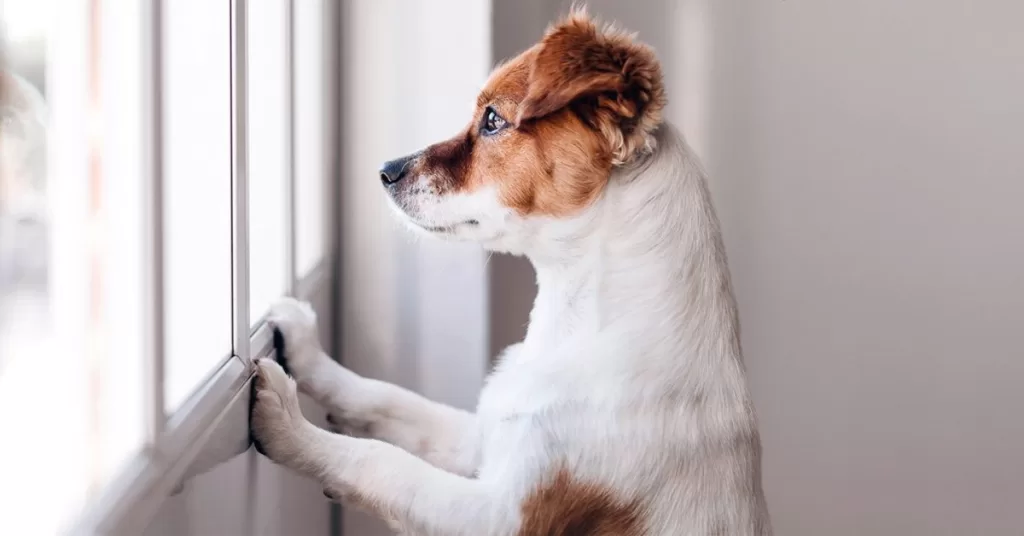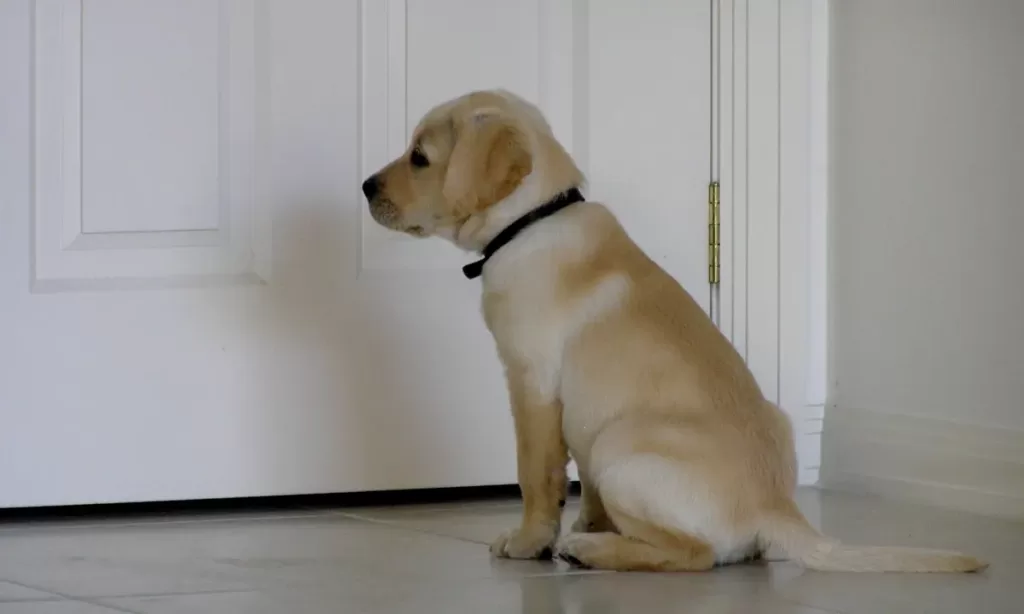Separation anxiety in dogs and puppies is a serious problem that can have a huge impact on their health and well-being. It can be very distressing for both pet and pet parents, with symptoms ranging from mild to severe.
Table of Contents
Early symptoms of separation anxiety in dogs

Recognizing the different signs of anxiety in its early stages can help prevent it from getting worse and provide your pet with the best possible care. In this blog post, we’ll explore five of the most common symptoms of separation anxiety in dogs and puppies to help you recognize the problem and take action.
1. Anxious behaviors
One of the first signs of separation anxiety in dogs and puppies is anxious behavior. These can range from mild to severe and include pacing, twitching, or shaking, especially when you are about to leave or have already left.
2. Loud barking or shouting
If your pet suffers from separation anxiety, you may also notice that they bark or growl a lot when you are away. This often indicates that they are sad and lonely and are trying to alert you to their distress.
3. Subversive acts
Another common symptom of separation anxiety in dogs and puppies is destructive behavior such as chewing, digging, or scratching. This is especially common around doors and windows as dogs and puppies try to escape to find you.
4. Accidents at home
If your pet suffers from separation anxiety, you may also find hazards such as urinating or defecating in the house. This is a sign that your pet is very anxious and depressed and has more severe separation anxiety.
5. Excessive salivation, drooling, or panting
Excessive salivation, drooling, or panting is also a sign of separation anxiety in dogs and puppies. This is a sign that your pet is very anxious and depressed and has more severe separation anxiety.
If you notice any of the above symptoms of separation anxiety in your pet, it is important to take action as soon as possible. The sooner you recognize the signs and act, the better the outcome for your pet.
Also Read: 5 Best Dog Crates for Separation Anxiety
The most important thing to remember is that you should never punish your pet for showing signs of separation anxiety. This can make the problem worse and cause more pain for your pet. Instead, try to focus on providing your pet with a calm and reassuring environment and seek professional help and guidance if needed.
We hope this blog post has helped you identify the five most common symptoms of separation anxiety in dogs and puppies. If you notice any of these symptoms in your pet, it is important to take action as soon as possible and seek professional help.
Why Do Some Dogs Become Depressed When They Are Left Alone?

There is not a single piece of evidence that points to the precise reason why dogs experience separation anxiety. However, it is believed that the loss of an important person or group of people in a dog’s life can lead to separation anxiety.
This is due to the fact that a far greater number of dogs who have been adopted from shelters have this behavior problem than those dogs who have been kept by a single family since they were puppies. Alterations in lifestyle that are not as profound can also bring on the disorder. The following is a list of circumstances that have been linked to the development of separation anxiety.
Alteration to the Family or Guardian
The experience of being abandoned turned over to a shelter, or transferred to the care of a new guardian or family can be a precipitating factor in the onset of separation anxiety.
Change in Schedule
The onset of separation anxiety in a dog can be precipitated by a sudden shift in the routine regarding the times of day or length of time that the dog is left alone. For instance, if a dog’s guardian used to work from home and spend the entire day with his dog, but then got a new job that required him to leave his dog alone for six hours or more at a time, the dog may develop separation anxiety as a result of the change in circumstances.
A Shift in Living Arrangements
Changing residences can be a precipitating factor in the onset of separation anxiety in some people.
Alterations to the Composition of the Family
The unexpected departure of a family member, who lives in the house, whether it is because of death or relocation, can be a precipitating factor in the onset of separation anxiety.
How to take care of and treat a Dog that is suffering from Separation Anxiety?
Separation anxiety is a common behavior problem in dogs and can be difficult to treat. This causes a lot of stress and disruption in the home and can lead to destructive behaviors such as chewing, digging and barking.
Fortunately, there are steps you can take to reduce your dog’s anxiety and make them more comfortable when alone. Here’s what you need to know about how to care for and treat a dog with separation anxiety.
1. Identify the cause of the anxiety
The first step in treating separation anxiety is to identify the cause. This could be anything from a change in routine to an underlying medical condition. If you cannot determine the cause, consult your veterinarian to rule out any medical problems.
2. Create a safe space
Create a safe and comfortable place for your dog to stay while you are away. This can be a crate, comfortable bed, or any other special area where your dog feels safe. Make sure it’s away from any drafts or noise and that it’s stocked with their favorite toys and treats.
3. Provide plenty of exercises
Exercise is important for all dogs, but especially for those dealing with separation anxiety. Make sure your dog gets plenty of daily exercise and stimulation, such as long walks, playtime, and other activities. Not only does exercise tire them out, but it also releases endorphins that help reduce stress and anxiety.
4. Train your dog
Training your dog will help them learn how to cope with being alone. Start by teaching basic commands like ‘sit’ and ‘stay’ and gradually increase the amount of time they can stay in the ‘stay’ position. You can also practice leaving the room and then coming back to reward them for being in a ‘be’ state.
5. Provide mental stimulation
Dogs need physical and mental stimulation to be happy and healthy. Offer your dog interactive toys like food puzzles and treat balls and practice fun activities like agility and hide-and-seek. It helps to stimulate them mentally and reduce their anxiety.
6. Talk to your vet
If your dog’s separation anxiety is severe, talk to your vet. They may prescribe anti-anxiety medication or recommend an anti-anxiety training program. In some cases, they may also suggest behavior modification techniques or refer you to a certified animal behaviorist.
Caring for a dog with separation anxiety can be challenging, but not impossible. By following the tips above, you can help your dog deal with their anxiety and provide them with the support and comfort they need.

